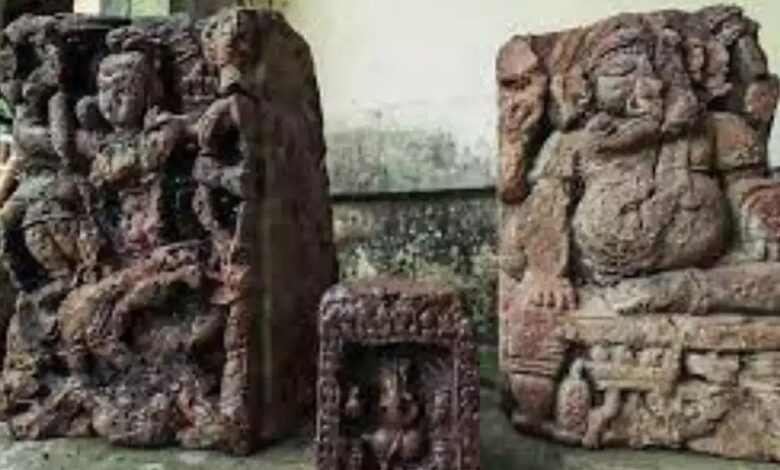Archaeological remains of 13th-15th century temple discovered in Odisha

The researchers of Indian National Trust for Art & Cultural Heritage (INTACH) in Odisha discovered the archaeological remains of a 13th-15th century temple near a railway station in the state’s Jajpur district.Considering its iconography, the temple is likely to have been constructed around the 13th-15th century, when the Eastern Ganga Dynasty ruled the region, INTACH Odisha unit project co-ordinator Anil Dhir said.
“In all our travels and discoveries, we had never come across such a large ruined complex with a multitude of remnants of a very early era temple. The ruins are suggestive of a large temple complex that had crumbled down due to unknown reasons. However, the base of the temple was still clearly visible. A large number of huge blocks, intricately carved stone panels, and few religious sculptures were found scattered all around the site. A Kalasha of a temple was found at the dug-up site near the railway station,” said Dhir.
Deepak Nayak, a heritage enthusiast, said Jajpur region was known as ‘Guheswarapataka’ and ruled by powerful dynasties like the Bhaumakaras, Somavamsis, Gangas and Suryavamsis.
“Art and architecture touched the pinnacle of finesse during the rule of these dynasties. Many beautiful temples of the Kalingan order were built during the glorious reigns of the kings,” said Nayak.

Dhir said the presence of many small forts in the vicinity is indicative of a large habitation in the early days.
“In the last five years, many archaeological remains from eastern Ganga’s era have been discovered in the nearby forts of Amaravati, Teligada and Darpanagada. The nearby villages of Teligada and Dharmasala had earlier yielded the Rathayatra stone panel and a magnificent Krishna-Vishnu image. These are now kept at the Odisha State Museum,” he said.
The temple ruins near the Dhanamandal railway station, were first noticed by Nrupati Nihar Siala, a local heritage enthusiast.
The ruins lay scattered in an area of four acres at the base of a small hillock, a little away from the siding.
They had come to light after the thick undergrowth was recently cleared for the expansion of the railway siding.
The workers had wanted to set up their camp there and had cleared the area by cutting the bushes.
When they saw the temple remnants, they set up their camp on the other side of the railway line.
(This story has not been edited by News Mania staff and is published from a Media Release)






